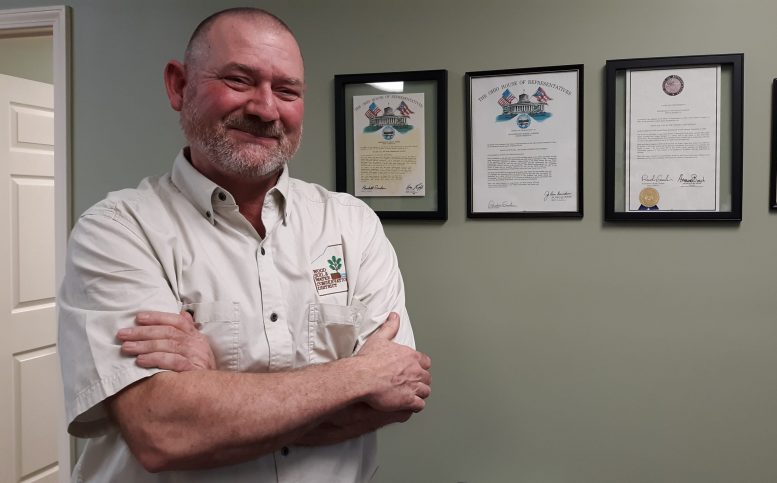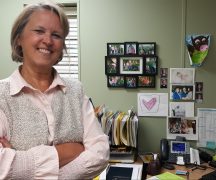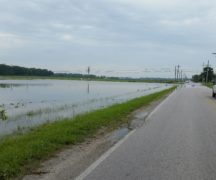By JAN LARSON McLAUGHLIN
BG Independent News
Jim Carter has walked countless miles of ditch banks, talked farmers through new-fangled soil conservation practices, and labored to keep local waterways healthy.
For 30 years, Carter has been working with the Wood Soil and Water Conservation District to help farmers and rural residents preserve the quality of their land and water.
He has no problem getting his hands dirty to help keep water clean and soil healthy.
“On my first day of work, I was told there was a tree sale – so come dressed appropriately,” said Carter, who is now the administrator of the office.
Since then, he has become a familiar face to many farmers and others focused on conserving soil and water. So familiar, that come county fair time, his progress through the fairgrounds is laboriously slow.
“My wife jokes with me that I’m related to half of the county, and the other half I know,” said Carter who was born and raised in Bloom Township and still farms there.
The Soil and Water Conservation agencies were created by the federal government after the 1930s dust bowl, which rendered useless an estimated 35 million acres of formerly cultivated land.
The goal was to prevent similar environmental disasters from occurring.
So Carter and his office push soil conservation, by promoting windbreak programs, buffer strips along fields, conservation tillage, crop rotation, anti-erosion practices, drainage improvements, and ditch maintenance.
That could mean working with farmers to reduce the amount of phosphorus that runs off fields into waterways. It could mean working with new rural residents who buy property in the country then wonder where their city water and sewer are.
It could mean talking landowners through ditch cleanout programs.
“Explaining how drainage works sometimes can be challenging,” Carter said. “The majority of our drainage is all man made. Man created it and man’s going to have to maintain it.”
And it could mean renting out conservation equipment to farmers who want to first try out a new process before investing a great deal of money.
“In the 90s, no-till was the new buzzword,” Carter said. “People didn’t know what it was.”
When Carter first started with the Wood Soil and Water Conservation District, just 2% to 3% of the farmland was no-till. Now he estimated more than 80% of soybean and wheat fields are no-till, and up to 40% of corn fields are no-till.
Twice a year, Carter and his staff drive more than 190 miles throughout Wood County to survey fields to find out what types of crops are planted, what types of tillage are being used, and whether or not cover crops are being planted.
Like farming, much of the Soil and Water Conservation work is a combination of tried and true methods – plus high-tech innovations.
“Technology has changed how we do business immensely,” he said.
As administrator of the office, Carter spends less time out in the fields now. But he still works to convince farmers to adopt conservation practices as they are proven to be good for the environment – such as planting cover crops.
“We knew sediment was transporting phosphorus and if we had groundcover, that would decrease,” he said.
But some practices push the “comfort levels” of farmers, and it takes proof of economic gains to get some to adopt changes.
“As much as I’d like to say it’s conservation driven, it is sometimes heavily driven by economics,” Carter said.
Carter believes it’s important for him to “practice what you preach” on his own farm, which is 100% no-till and has cover crops.
“I encourage everybody to try things.”
The latest trend Carter is promoting is H2Ohio, the statewide watershed planning and management program, established in 2019 to coordinate and build upon the shared efforts of state and local partners to improve water quality throughout Ohio.
Initially it created a lot of “heartburn,” but Wood County currently has 125 farmers signed up, with 78,000 acres enrolled in the program.
“It’s a good program in my estimation,” Carter said.




